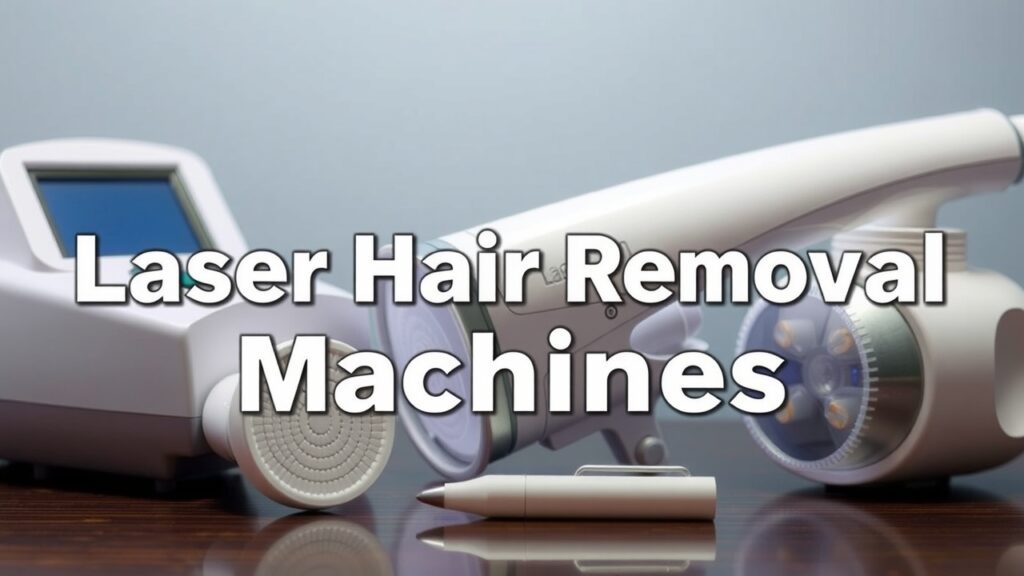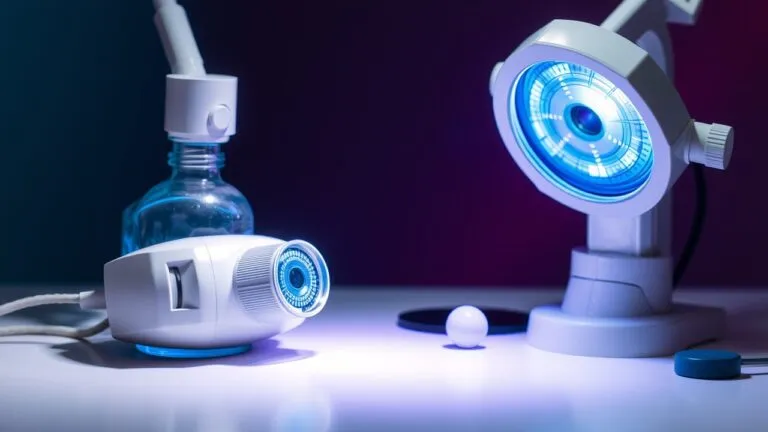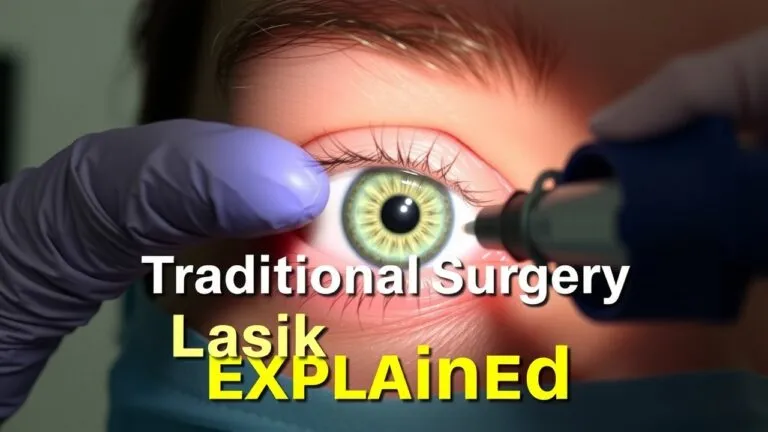Types of laser hair removal machines vary widely; this guide compares different machines, highlighting features and helping you choose the best machine for your needs.
What Are Laser Hair Removal Machines?

Laser hair removal machines are devices that help reduce unwanted hair on the body and face. They work by focusing on hair follicles using light that is absorbed by melanin, the pigment in hair. When the machine emits specific wavelengths of light, it penetrates the skin and is taken in by the melanin. This process damages the hair follicle, which can lead to long-term reduction or even permanent hair removal.
There are different types of laser technologies used in these machines. Each one has its unique features:
- Alexandrite Laser: This laser is quick and works well on lighter skin tones.
- Diode Laser: It’s versatile and works for various skin types, especially darker skin tones.
- Nd:YAG Laser: This one is suitable for all skin types, but it’s great for darker complexions because it penetrates deeply without hurting nearby tissues.
- Intense Pulsed Light (IPL): While it’s not a laser, IPL uses broad-spectrum light to target pigmentation and can be used like traditional lasers.
Knowing about these different machines helps people choose the right one based on their hair color and skin tone.
Why Understanding Machine Types Matters?
Choosing the right type of laser or light device is very important because it affects how well the treatment works. Different machines have different effectiveness levels depending on personal factors like skin tone and hair color.
When picking a laser hair removal machine, think about these key points:
- Skin Type Considerations: Some lasers work better with certain skin tones since they interact differently with melanin.
- Hair Color Compatibility: Dark hairs take in more light energy than lighter ones; therefore, some lasers might not work as well on blonde or gray hairs.
- Safety Features: Look for built-in safety options to prevent overheating or too much exposure during treatments.
- Contraindications: Certain medical conditions or medications may make some types unsuitable; knowing this helps avoid problems during treatments.
Being aware of these details when choosing a machine helps ensure safer procedures with better results while reducing risks related to incorrect use or equipment choice.
Alexandrite Lasers Explained
What Is an Alexandrite Laser?
The Alexandrite laser is a hair removal technology that uses a specific wavelength of 755nm. This wavelength targets melanin, the dark pigment in hair follicles. Because of this, it’s especially effective for people with lighter skin tones and darker hair colors. The laser sends focused light energy into the hair follicle, damaging it and slowing down future hair growth.
Advantages of Alexandrite Lasers for Hair Removal
- Fast Treatment Times: One great thing about Alexandrite lasers is their speed. They can quickly treat larger body areas, like legs or backs, often needing fewer sessions than other machines.
- High Precision: This type of laser works well on those with light skin and dark hair, allowing practitioners to achieve very good results.
Disadvantages and Side Effects to Consider
While many people benefit from Alexandrite lasers, they do have some downsides. For instance, they are less effective on darker skin tones (Fitzpatrick IV-VI) because more melanin increases the risk of burns if not used correctly. After treatment, some may experience side effects like redness or swelling. It’s best to discuss these potential reactions during your consultation before starting any treatment.
Diode Lasers Explained
What Is a Diode Laser?
A diode laser is a special kind of laser that helps with hair removal. It works at wavelengths between 800 and 810 nm. This range lets the laser go deep into the skin and focus on melanin in hair follicles. Because of this, diode lasers can work well for many skin types, especially those classified as Fitzpatrick I-IV. This includes people with lighter and medium-dark skin tones.
Diode lasers are getting more popular because they are safe and effective for different people. They can treat various hair colors and thicknesses, making them a great choice for anyone wanting to reduce unwanted hair.
Benefits of Using Diode Lasers
There are several reasons why diode lasers are preferred for hair removal:
- Works on Different Skin Types: They can be used safely on various Fitzpatrick skin types, helping those with light to medium-dark skin.
- Effectiveness on Hair Colors: These lasers treat coarse hairs and finer ones, so they cover a wide range of needs.
- Multiple Treatment Areas: Diode lasers are safe for many body parts like legs, underarms, and face.
The flexibility of diode lasers allows professionals to tailor treatments to individual needs based on hair color or thickness.
Limitations & Potential Risks
Even though diode lasers have many benefits, some drawbacks exist:
- Longer Treatment Times: Compared to Alexandrite lasers, treatments can take longer because of the lower speed.
- Possible Side Effects: Some patients might feel mild discomfort or see redness after sessions if they don’t follow aftercare properly.
Knowing these factors is important when deciding on a diode laser treatment plan.
How Does an Nd:YAG Laser Work?
The Nd:YAG laser works at a wavelength of 1064 nm. This long wavelength allows it to reach deeper into the skin than other lasers. It’s good at targeting melanin in hair follicles while causing less harm to nearby skin. Because of this, Nd:YAG lasers are great for people with darker skin tones (Fitzpatrick IV-VI). They can effectively remove coarser hair without as much risk of burns that shorter-wavelength lasers might cause.
Advantages of Nd:YAG Lasers for Hair Removal
Using Nd:YAG lasers has many benefits. They are especially effective for darker skin tones. The deep penetration makes them suitable for coarse hairs that often appear in these complexions. Another big plus is the reduced risk of burns compared to Alexandrite or Diode lasers when they are used properly on dark skin.
Nd:YAG lasers also provide long-lasting results. People may need fewer maintenance treatments over time due to their effectiveness in achieving permanent hair reduction.
Limitations and Side Effects
Even though there are many advantages, Nd:YAG lasers do have some downsides. Treatments might require more sessions than those with Alexandrite or Diode lasers before patients see significant results.
Some common side effects include temporary redness or swelling after treatment sessions. However, these usually go away quickly if patients follow proper aftercare instructions. It’s important for anyone thinking about this treatment to know all the possible risks before starting any sessions.
How Does IPL Hair Removal Work?
Intense Pulsed Light (IPL) hair removal uses broad-spectrum light to remove unwanted hair. Unlike regular lasers that use one wavelength, IPL devices emit many wavelengths. This photoepilation technology sends light pulses into the skin.
When the light goes into the skin, it gets absorbed by the color in the hair follicles. This absorption creates heat, which damages the follicle. This damage stops future hair growth. Although IPL can result in permanent hair reduction, you’ll need multiple sessions to see great results.
One of IPL’s key perks is that it’s versatile. It works on different skin types and tones. However, how well it works can depend on individual traits like hair color and thickness. Darker hairs usually absorb more light, making treatments better for people with dark or coarse hair.
Advantages of IPL Devices
IPL devices offer an affordable choice compared to professional laser treatments. They can be a cost-effective option for those wanting at-home laser hair removal without losing too much quality. Many users find these devices work well for certain skin types and colors due to adjustable settings.
The effectiveness of IPL compared to traditional lasers varies based on factors like where you’re treating and how consistent you are with your sessions. Many at-home laser hair removal devices provide convenience while still giving satisfactory results when used properly.
Key Benefits:
- Cost-Effective: Usually cheaper than professional treatments.
- Versatile Use: Works on different body areas.
- User-Friendly: Many models are simple to operate at home.
Disadvantages and Limitations
Even though there are benefits, there are some downsides to using IPL machines instead of laser hair removal. One big downside is that they may not work as well overall; studies show traditional lasers can give faster results in fewer sessions.
Improper use or not following safety guidelines can lead to issues like burns or changes in skin color—especially if it’s not suited for your specific skin type or sensitivity level.
You’ll likely need several treatments before you get the results you want; being patient during this process is key because seeing visible changes takes time.
Considerations:
- Effectiveness Variability: You might need more sessions than with standard laser methods.
- Potential Side Effects: Higher risk if not used correctly.
- Individual Suitability: Not all machines work well for every skin type or color; talking to professionals could help determine if IPL is right for you before starting any treatment with this technology.
Choosing the Right Machine: A Comparison
When looking into laser hair removal, knowing about the types of machines is super important. Each one has its own features that work better for different skin tones and hair types. This makes picking the right one essential for getting the best results.
Key Features to Compare
Here are some key features to think about when checking out laser hair removal machines:
- Wavelength: Different lasers work at different wavelengths. This affects how well they match with your skin tone.
- Skin Tone Compatibility: Some devices work best on light skin, while others are made for darker skin tones.
- Hair Color Effectiveness: The success of a treatment can vary based on whether your hair is fine or coarse.
- Treatment Time: This tells you how long each session will take depending on where you’re treating.
- Cost: Prices can be very different between home devices and professional machines.
Wavelength and Skin Type Suitability
The wavelength used in a laser machine is crucial for its effectiveness on various skin types. Common wavelengths include:
| Laser Type | Wavelength (nm) | Best For |
|---|---|---|
| Alexandrite | 755 | Light to medium skin |
| Diode | 800 | All skin types |
| Nd:YAG | 1064 | Darker skin |
For those with darker skin, Nd:YAG lasers are recommended because they reach deeper layers of skin without harming the surface. Alexandrite lasers are better for lighter skins since there’s more contrast between the hair color and skin tone.
Hair Type Considerations
Different machines also work better with specific hair types.
- Fine hairs often respond well to diode lasers because they target pigment efficiently.
- Coarse hairs may need stronger settings found in professional-grade equipment like Nd:YAG or Alexandrite systems.
Speed and Treatment Time
Treatment time can differ a lot among machines. Factors that influence this include pulse duration—the time each pulse lasts—and spot size—the area covered by each pulse of light. Generally:
- Larger spot sizes can speed up treatments but might not work as well on smaller areas like the face.
- Shorter pulse durations allow for precise targeting but could make treatments longer if several passes are needed.
Effectiveness Across Different Technologies
Effectiveness changes a lot based on the technology used and how well it offers permanent hair reduction. Studies show that:
- Diode lasers give reliable results across many demographics,
- Alexandrite lasers are fast at treating larger areas,
- Nd:YAG lasers are safer for darker skin while still providing good reductions over time.
Choosing a machine based only on price may lead to less satisfying results, so it’s important to look at effectiveness too.
Side Effects Overview
While generally safe when done correctly, side effects from laser treatments can happen. These include redness, swelling, or temporary changes in skin color, especially if a device isn’t suitable for your specific needs (like your skin tone or hair type). Talking with professionals before starting helps you make informed decisions about any risks associated with specific machines.
To wrap things up, choosing the right laser hair removal machine means looking closely at how the wavelength matches your skin type and what results you want based on your individual hair type and budget. By carefully considering these elements against available technologies—whether you’re after personal use devices or professional options—you’ll improve your chances of getting great results that suit you!
Potential Risks and Side Effects
Laser hair removal is mostly safe, but you should know the risks and side effects. Common problems include temporary redness and swelling in the treated area. These usually go away in a few hours or a couple of days. Sometimes, patients may face blistering or changes in skin color, like darkening or lightening.
It’s important to talk with a qualified professional before treatment. They can look at your skin type and medical history to see your individual risk factors. Some people shouldn’t get laser hair removal. For example, pregnant women or those taking certain medications might face higher risks of side effects. Knowing about these complications helps you make better choices about your treatment options.
Importance of Professional Consultation
Finding a skilled technician for laser hair removal is key for safety and success. A good consultation gives you personalized advice based on your needs. The technician will figure out which laser or device suits your skin tone and hair color best while keeping risks low.
Professionals know the safety features of different machines used for laser treatments. Their experience helps them handle any issues that might pop up during the procedure.
Proper Pre and Post-Treatment Care
To cut down on side effects from laser hair removal, it’s smart to follow pre-treatment and post-treatment care tips:
Pre-Treatment Care:
- Stay out of the sun before your sessions.
- Stop taking blood-thinning medications if your provider says so.
Post-Treatment Care:
- Use soothing creams recommended by your technician after each session.
- Avoid direct sunlight until you’re fully healed.
Following these steps helps improve results and lessen discomfort during recovery.
FAQs About Laser Hair Removal Machines
What types of laser hair removal machines are available?
Laser hair removal machines include Alexandrite, Diode, Nd:YAG, and IPL systems. Each type targets hair follicles differently based on skin tone and hair color.
How does the Candela GentleMax Pro compare to other machines?
The Candela GentleMax Pro combines Alexandrite and Nd:YAG lasers, making it effective for various skin types. It provides quick treatments and minimizes discomfort.
Are there portable laser hair removal machines?
Yes, portable options exist for home use. These devices offer convenience but may not be as powerful as professional machines.
What factors should I consider when buying a laser hair removal machine?
Consider skin type compatibility, hair color effectiveness, cost, and treatment area size. Evaluate warranty and maintenance needs too.
How much do professional laser hair removal machines cost?
Prices vary widely. Professional systems range from $10,000 to over $100,000 depending on features and technology.
Key Considerations When Choosing a Laser Hair Removal Machine
- Skin Type Compatibility: Different machines suit specific skin tones.
- Hair Color Considerations: Darker hair responds better to most laser treatments.
- Treatment Areas: Larger areas need machines with larger spot sizes.
- Safety Features: Check for cooling systems and built-in safeguards.
- Maintenance Needs: Regular upkeep can prolong machine life.
- Certifications: Look for FDA approval or CE marking for safety assurance.
- Warranty and Support: Choose brands that offer good customer service and repair options.
- Clinical Studies: Research efficacy data on different machine types for informed decisions.
- Patient Testimonials: Gather insights from others who have used the equipment.
By focusing on these aspects, you can select the most suitable laser hair removal machine for your needs.
Related Topics
- Types of lasers for hair removal
- Types of skin tones and hair colors for laser treatment
- Types of side effects of laser hair removal
- Types of pre- and post-treatment care for laser hair removal
- Types of professional consultations for laser hair removal
- Types of home vs. professional laser hair removal machines
- Types of IPL devices for hair removal
- Types of risks associated with laser hair removal



Types of Laser Hair Removal Machines: A Guide to Alexandrite, Diode & More